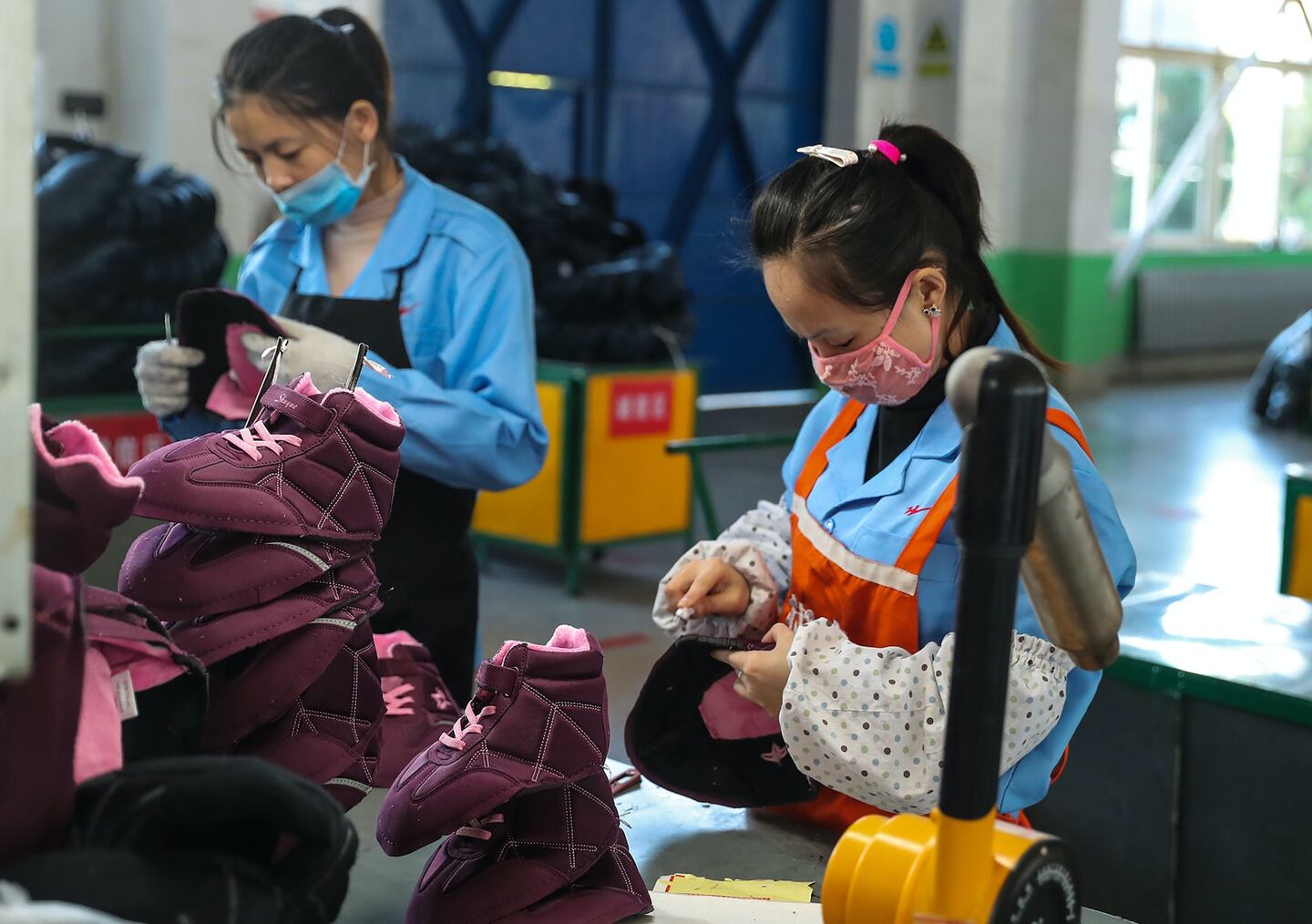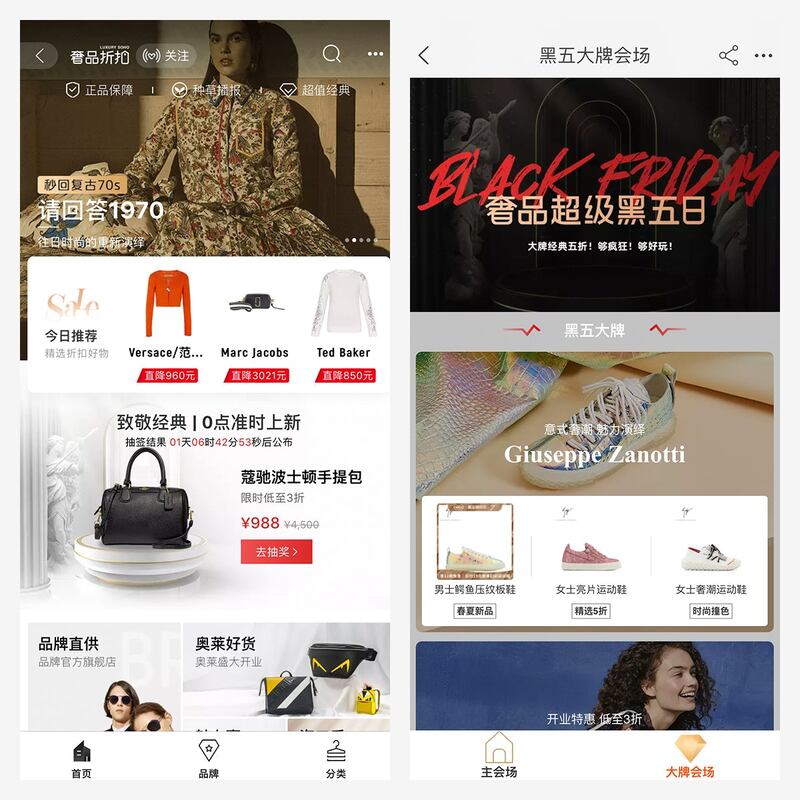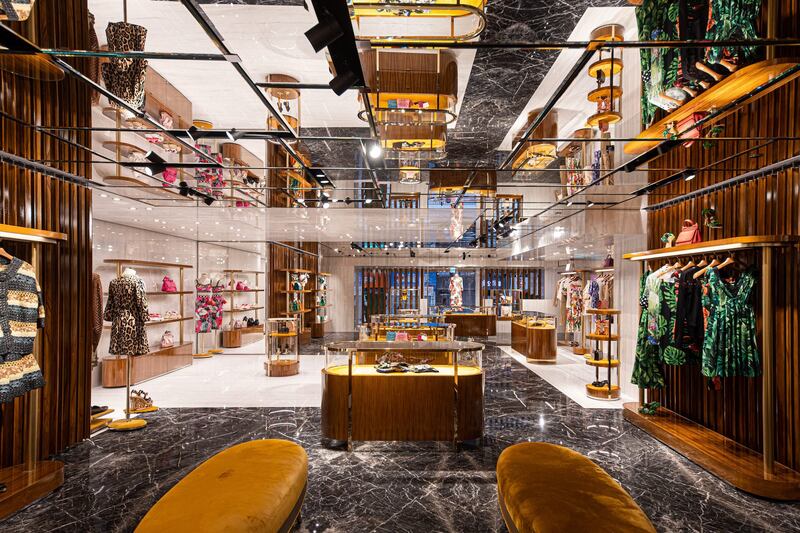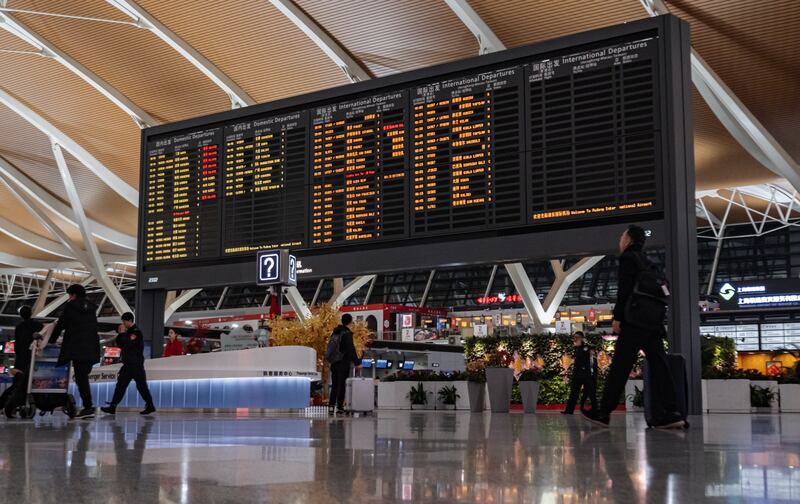
The Business of Fashion
Agenda-setting intelligence, analysis and advice for the global fashion community.

Agenda-setting intelligence, analysis and advice for the global fashion community.

SHANGHAI, China — In many ways, the rise of modern China has been an allegory of globalisation. Today, as countries turn inward to battle the coronavirus pandemic, the idea of a complex supply chain or even one that relies on a single market far from home is seen by many as an untenable risk.
The global fashion industry actually spent much of the past decade trying to break up with Chinese manufacturing in order to escape this dangerously co-dependent relationship. It has made some progress, but China remains an enticing powerhouse with manufacturing infrastructure and attractive supply chain assets that have proven difficult to divorce from.
Although garment manufacturing, especially cut and sew, has largely decamped to cheaper markets around the world, fashion hasn't been able to kick the habit of sourcing raw materials, trims, zippers and more from China, even as labour prices in the country continue to climb and tariffs introduced as part of US President Donald Trump's trade war continue to bite.
The idea of a complex supply chain or even one that relies on a single market far from home is seen by many as an untenable risk.
According to World Trade Organisation data, 30.8 percent of the world’s apparel exports in 2019 came from China, along with 39.2 percent of global textile exports. When footwear, accessories, fibres and other raw materials and components such as trims, elastic, zippers and hang tags are taken into consideration, the proportion of the world’s fashion passing through the country is believed by supply chain experts in China to be as high as 60 percent.
ADVERTISEMENT
“Most [other] countries’ garment industries aren’t fully self-sufficient; they rely on getting components from China,” explained Melanie DiSalvo, founder of Virtue + Vice, a consultancy set up to help boutique fashion brands clean up their supply chain.
Her work is concentrated in India and China, but she says people might be surprised to learn how much of the material being put together in Indian factories is actually sourced from China.
“There is a huge trade going on where denim is coming from China,” she added. “India is getting all its silk from China, too. I think people don't realise, all the trims and elastics are impossible to find in India; it all comes from China.”
This continued dependence on China came to a head in the early months of this year, when the country became the first to experience a widespread outbreak of the coronavirus, causing its factories to close and crucial cogs in the fashion supply chain to grind to a halt. Brands that had largely offshored their supply chain out of China initially felt vindicated, having saved themselves from the supply side disruption of what was then mistakenly considered to be just a local epidemic.
"I would say relative to a lot of the industry, we are hedged in China more than a lot of our peers," Levi's Chief Executive Chip Bergh told supply chain managers at the Retail Industry Leaders Association conference at the end of February. The company reduced its manufacturing in China from 16 percent in 2017 to between 1 percent and 2 percent in 2019, largely to escape trade war-induced tariffs. Bergh added that the move had shielded the company from that initial coronavirus hit, even as stores in China remained shut.
Today, we know that no-one and nowhere is shielded from the coronavirus pandemic. Fashion brands that had moved more of their supply chain out of China, to markets such as Bangladesh and Vietnam, found supply was disrupted there in turn.
Fashion brands need to start planning for the post-pandemic phase of business now.
Though in many cases, that supply-side disruption mattered less than the demand disruption caused by retail closures around the globe, leading many major fashion brands to cancel orders amounting to around $6 billion in Bangladesh alone, according to the Bangladesh Garment Manufacturers and Exporters Association (BGMEA) and its knitwear counterpart association the BKMEA. Meanwhile, current season inventory sits idle in stores, warehouses and distribution centres.
But now, even as production is halted in most places around the world, China is open for business and producing the orders that have not been cancelled. Manufacturers here face an uncertain future as business from overseas becomes scarcer, mitigated only somewhat by demand from growing domestic fashion brands looking to move their way up the value chain.
ADVERTISEMENT
While the move of production out of China has largely been about rising costs and the razor thin margins of mass garment production making it an unsustainable choice, the trend has also been an exercise in diversification to mitigate future risks.
The coronavirus pandemic has highlighted how reliant the world is on China for vital supply chain links, especially for medicines and personal protective equipment, as dozens of countries concurrently grapple for both. As a result, there is growing pressure for the pharmaceutical industry in Europe and North America to be repatriated.
Similarly, fashion companies, especially American ones, are likely to feel the pressure to “decouple” from China in an election year which promises to be heavy on anti-China rhetoric.
With so much in flux in the midst of the ongoing pandemic, it is too early to know exactly how fashion’s post-coronavirus supply chain will change, in terms of its reliance on China or many other factors currently collectively weighing on the industry. Nevertheless, fashion brands need to start planning for the post-pandemic phase of business now.
In this uncertain time, BoF turned to experts in Chinese manufacturing, sourcing and supply chain management for advice about what brands should consider before making any big decisions.
Gerhard Flatz, managing director of KTC Limited, a high-end performance wear specialist based in Guangdong Province, manufacturing for niche European brands and Chinese designer Yang Li.
“It doesn’t matter if its in China, Cambodia, Bangladesh, Myanmar, America, or God knows where; we have to leave this macro environment and create a micro environment. I envisioned this is 2008 when I took over the company. We increased our cash reserves and upgraded our product offering. We saw even back then that China would become too expensive, brands would shift their sourcing focus to Southeast Asia and what is left in China is the premium piece of the cake. A diversified supply chain means a lot of manpower and a lot of uncertainty, so we have to come back from this extended workbench concept.”
Yossi Nasser, chief executive of leading intimates manufacturing supplier, Gelmart International
ADVERTISEMENT
“Having the supply chain flexibility to reshore to China now, while Bangladesh and India are experiencing lockdowns is key. In the near term, there is going to be this element of reshoring [to China], but [brands] don’t want to be caught out in the situation many companies have just faced [as part of the US-China trade war] where a tariff can [be] put on your product with [only] 30 days notice. If [brands] strategically put some of the supply chain back to China [now then don’t] make it a ditch to ditch, aggressive move. Maybe centralise [most operations there] and then use diversified sources [for] sewing and cutting, so if there is a supply chain disruption, you are able to flexibly and quickly scale up one production source and de-emphasise another.”
Melanie DiSalvo, founder of Virtue + Vice, sustainable supply chain consultancy, previously product developer for companies including Walmart, Target, Ralph Lauren, and Levi's.
“China was set up to make things. The infrastructure is there and everything just works. If I was a struggling brand, I would want to be in a country like that, where things are set up to move and you are going to have the least amount of issues along the way. You need to be focusing your money and staff and attention on rebuilding your business. Supply chain diversification is a long-term goal but I don’t recommend the brands I work with jump right into that because everyone else is closed and China is still going. That’s the reason some of my brands are surviving right now. That’s not something to walk away from.”
John Evan, managing director of Tractus Asia, a strategy and operations management consulting firm.
“You are going to continue to see a decoupling, politically, it’s clear that [the US and China] would each like to have less reliance on the other. I think you will continue to see companies looking at [manufacturing in] China for China, then nearshoring or reshoring back to their own countries, especially for fashion and apparel. The other thing that has been highlighted by Covid-19 is [the trouble with having] too many eggs in one basket. All of a sudden, risk mitigation has gone from people thinking it’s kind of important, to the US-China trade war when people realised it was really important, to now when it has become the number one concern.”
Hilmond Hui, vice president of Bombyx, a specialist sustainable manufacturer that provides silk fabrics to big name eco-brands including Everlane, J Crew and Madewell.
“On-shoring for the US and European brands will likely take a back seat, especially in our industry, due to priorities lying in restarting retail and the economy. In my own opinion, off-shoring from China fractures the supply chain to a point where it can create a lot of logistic and information stress and inefficiency. Consolidating supply chains can be done by partnering with vertical operations across different materials or product categories. By doing this, the suppliers have the opportunity to be more flexible in their own set up because they control more of their supply chain, and have more room to spread out their production and finances.”
Anson Zhou, spent more than a decade as a senior merchandising manager at industry giant Li & Fung before becoming a freelance consultant in sourcing and supply chain management for clients including Macy’s, JC Penney and Tommy Hilfiger.
“Most retailers and brands are unsure about the market situation [but] obviously, the order size is going to be much lower compared to last year. [The best strategy is] to try some small orders and put the products on the market and see the reaction and make a quick decision on a re-order. That means they need quicker speed in their supply chain management. Southeast Asia, Bangladesh or Myanmar are focused on huge quantities and long delivery times. If we focus on quick delivery in 45 days, even 25 days, that makes China the big player, [so] international brands will have to look to China because they lead the way in that.”
These interviews have been condensed and edited.
 Opens in new window
Opens in new window时尚与美容 FASHION & BEAUTY

Cai Xukun Stars in Prada 520 Campaign | Source: Courtesy
Prada Kickstarts Luxury 520 Campaigns
Superstar Cai Xukun stars in Prada's latest campaign for China's May 20 Valentine's Day equivalent (known as 520, the numbers in Mandarin sound similar to the phrase, "I love you"). There are several Chinese Valentine's Days scattered throughout the calendar but 520 has quickly risen to become perhaps the most important for driving gifting, especially this year as sales remain weak in the wake of China's coronavirus outbreak. Prada was the first luxury brand out of the box this year with a digital campaign that sees Cai adding up his actions: "100 hours thinking of you," "12 new songs written," "85 attempts to pick the perfect gift," and so on, until he gets to the magic number of 520. (Prada Press Release)
Chinese Beauty Businesses Pivot Online During Pandemic
For Maggie Fu, a Shanghai-based make-up artist and beauty influencer, the widespread stay-at-home orders in China at the start of the outbreak created an opportunity. With tens of millions of manicure enthusiasts unable to visit nail salons, Fu decided to create a stick-on, DIY manicure kit that delivers salon-quality nails, with no skill required by customers to apply them. Yue Xiaolin, a fellow make-up artist, professional stylist and the founder of Lin Makeup, pivoted to conducting online classes, designing professional courses for make-up stylists and an everyday beauty tutorial option for cosmetics enthusiasts. (South China Morning Post)
科技与创新 TECH & INNOVATION

Luxury Soho screenshot | Source: Jing Daily
Tmall to Launch Luxury Outlet
Tmall has launched its "Luxury Soho" channel, marking the Chinese e-commerce giant's entrance into the luxury outlet business. The new initiative, in parallel with Alibaba's Luxury Pavilion, is expected to increase the digital footprint of high-end brands in post-coronavirus China. Currently, brands such as Coach, Giuseppe Zanotti, and Versace are available on the outlet channel. (Jing Daily)
JD.com to File for $2 Billion Second Listing
Chinese e-commerce giant JD.com has filed confidentially for a second listing in Hong Kong, according to people with knowledge of the matter, joining rival Alibaba in tapping the city's stock market for funds.The offering could raise at least $2 billion, the people said, asking not to be identified because the information is private. The Beijing-based company, which currently trades on Nasdaq, has a market value of $64 billion. (Bloomberg)
China’s Online Population Reaches 900 Million
The number of people using the internet in China reached 900 million in March, an increase of 75 million from the end of 2018, according to a report from the China Internet Network Information Centre (CNNIC) released this week. Today, 710 million people shop online, an increase of 100 million compared to 2018. Online payment users total 768 million, up from 600 million, with 765 million making payments via mobile phone. (China News Service)
消费与零售 CONSUMER & RETAIL

Inside Dolce & Gabbana's New Hong Kong Boutique | Source: Courtesy
Dolce & Gabbana Swim Against Tide in Hong Kong
Recent months have brought news of one luxury brand after another shuttering sizable retail locations in Hong Kong, with steep rents more and more difficult to justify in the wake of ongoing political unrest hampering tourism from China, followed by the worldwide coronavirus pandemic, hampering tourism from everywhere else. Dolce & Gabbana have bucked that trend by revamping and reopening its flagship store on Hong Kong's Canton Road — a show of confidence in Hong Kong's local luxury consumers. (Fashion Network)
China’s Pinduoduo Invests $200 Million in Appliance Retailer
The move marks Pinduoduo's first strategic investment after it raised $1.1 billion in a private share placement in March. According to a statement, the strategic partnership will strengthen Pinduoduo's position in the household appliances and electronics sector, as well as strengthening its omnichannel proposition through Gome's 2,600 offline retail stores across 776 cities across China. (Tech in Asia)
政治,经济与社会 POLITICS, ECONOMY, SOCIETY

Schedule board displaying flight information in the departure hall of Shanghai Pudong International Airport | Source: Shutterstock
May Holiday to Test Chinese Appetite for (Domestic) Travel
China's upcoming Labour Day public holiday will run from May 1 to 5, and average airfares for Chinese travellers are about 30 percent lower than they were last year, according to a report from Alibaba Group's travel agency Fliggy. Around 90 million people will embark on trips during the extended holiday, about double the number who travelled during the Tomb Sweeping holiday earlier this month, according to a separate report published yesterday by China's largest online travel agency Trip.com. (Yicai Global)
Date Set for China’s Most Important Political Gathering
After its original March date was pushed back due to China's coronavirus outbreak, China's joint sessions of the country's National People's Congress and Chinese People's Political Consultative Conference, colloquially known as the Da Liang Hui (or two big meetings) are now set to start on May 21 and 22. China ratifies major legislation and unveils economic targets at these meetings, which see 5,000 delegates descend on Beijing for at least 10 days. (Xinhua)
China Decoded wants to hear from you. Send tips, suggestions, complaints and compliments to our Shanghai-based Asia Correspondent casey.hall@businessoffashion.com.
With consumers tightening their belts in China, the battle between global fast fashion brands and local high street giants has intensified.
Investors are bracing for a steep slowdown in luxury sales when luxury companies report their first quarter results, reflecting lacklustre Chinese demand.
The French beauty giant’s two latest deals are part of a wider M&A push by global players to capture a larger slice of the China market, targeting buzzy high-end brands that offer products with distinctive Chinese elements.
Post-Covid spend by US tourists in Europe has surged past 2019 levels. Chinese travellers, by contrast, have largely favoured domestic and regional destinations like Hong Kong, Singapore and Japan.